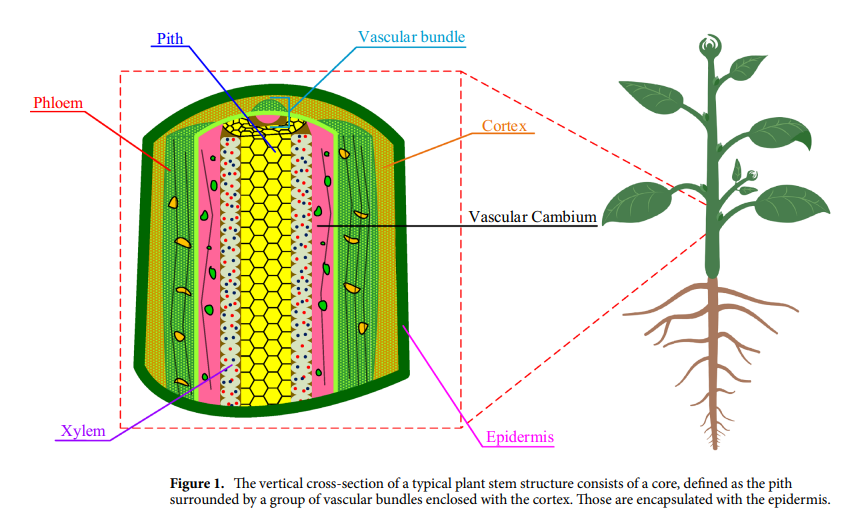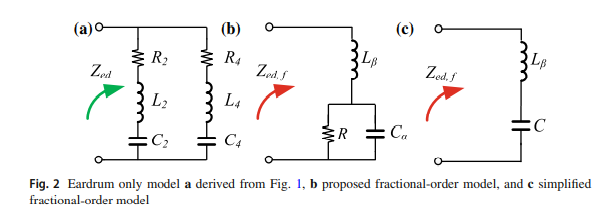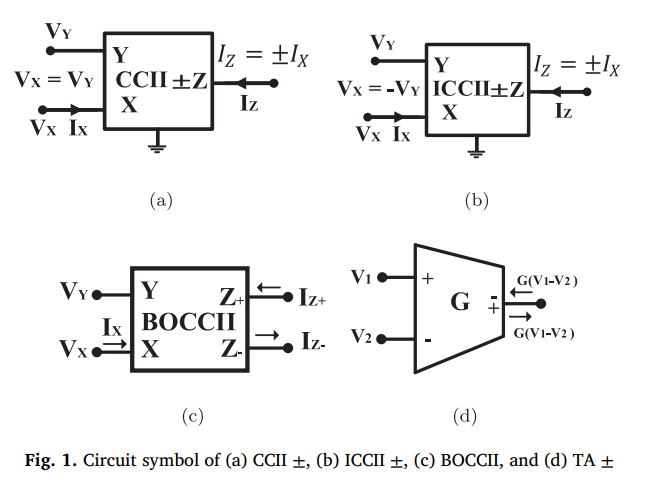Breadcrumb

Fractional-Order Generalized Gene Regulation Model CCII-Based Practical Emulator
This paper presents a practical emulator of a generalised fractional-order model for gene regulation process, in an analog platform. The presented emulator is based on the second-generation current conveyor (CCII) and implemented using AD844 chips. The emulator realises a proposed generalised mathematical model for gene expression. The model sums up three different single models; the constitutive gene model, the induced gene expression under the effect of activators and repressors models. The generalised model is based on fractional-order differential equations where the concentration of the

Plant stem tissue modeling and parameter identification using metaheuristic optimization algorithms

Generalized fractional logistic map encryption system based on FPGA
This paper introduces the design of a generalized fractional order logistic map suitable for pseudorandom number key generators and its application in an encryption system based on FPGA. The map is generalized through two parameters (a,b) where complete analysis of their effect on the map is detailed, which gives more control on the map chaotic regions. The vertical map and the zooming map presented in this paper are two special maps extracted from the generalized map with their detailed analysis. Not only the positive bifurcation, but also the negative side is discussed through this paper

Dynamics of fractional and double-humped logistic maps versus the conventional one
This paper presents the dynamic analysis of two discrete logistic chaotic maps versus the conventional map. The first map is the fractional logistic map with the extra degrees of freedom provided by the added number of variables. It has two more variables over the conventional one. The second map is the double-humped logistic map. It is a fourth-order map which increases the non-linearity over the conventional one. The dynamics of the three maps are discussed in details, including mathematical derivations of fixed points, stability analysis, bifurcation diagrams and the study of their chaotic

A Novel Power-Aware Task Scheduling for Energy Harvesting-Based Wearable Biomedical Devices Using FPA
Power management and saving in energy harvesting-based biomedical wearable devices are mandatory to ensure prolonged and stable operation under a stringent power budget. Thus, power-aware task scheduling can play a key role in minimizing energy consumption to improve system durability while maintaining device functionality. This paper proposes a novel biosensor task scheduling for optimizing energy consumption through wearable biomedical devices. The proposed approach is based on Flower Pollination Algorithm (FPA). The biomedical functionality constraints are enforced with a Hamming-based

Design and Implementation of an Optimized Artificial Human Eardrum Model
This paper introduces a fractional-order eardrum Type-II model, which is derived using fractional calculus to reduce the number of elements compared to its integer-order counterpart. The proposed fractional-order model parameters are extracted and compared using five meta-heuristic optimization techniques. The CMOS implementation of the model is performed using the Design Kit of the Austria Mikro Systeme (AMS) 0.35 μ m CMOS process, while the simulations have been performed using the Cadence IC design suite. © 2019, Springer Science+Business Media, LLC, part of Springer Nature.

Impact of oustaloup and matsuda approximations on fractional pid controller of pv panel
Due to the non-linear relation between current and voltage of the PV modules, DC/DC power electronic converters are used to adapt this non-linearity. Controllers are used to control the DC/DC converters in order that, they can take actions against changes in irradiance input levels, temperature input levels and load values. In this study, a standalone PV system that feeds a DC load is simulated. Integer order controller and fractional order controller are compared considering two scenarios. The first scenario is to change the irradiance levels while maintaining the load at a constant value. In

Generic FPGA Design of Spiking Neuron Model
This paper introduces a new representation of the human brain neuron cell response. Implementation of a single cell model of an excitatory and inhibitory neuron. The architecture is based on mimic the real reaction of the neuron cell. Excitatory and inhibitory are implemented in generic form for all neuron's behavior. The design is tested experimentally using FPGA. The designs have been realized, simulated using Xilinx ISE 14.7, and realized on Xilinx FPGA Virtex Artix-7 XC7A100T. The proposed realization shows good performance to be compatible with various applications. © 2020 IEEE.

General fractional order mem-elements mutators
This paper proposes the realization of grounded and floating fractional order mem-elements (FOMEs) based on two- and three-port mutators, respectively. Three different topologies based on two-port mutators are implemented using the four members of the second-generation current conveyor (CCII) family which is useful to achieve several realizations for the same circuit. The Fractional Order Mem-capacitor (FOMC) and Fractional Order Mem-inductor (FOMI) are realized using different combinations of memristor and fractional order capacitor (FOC) plus resistors. In addition, the generalization of the
Identifying the Parameters of Cole Impedance Model Using Magnitude Only and Complex Impedance Measurements: A Metaheuristic Optimization Approach
Due to the good correlation between the physiological and pathological conditions of fruits and vegetables and their equivalent Cole impedance model parameters, an accurate and reliable technique for their identification is sought by many researchers since the introduction of the model in early 1940s. The nonlinear least squares (NLS) and its variants are examples of the conventional optimization techniques that are commonly used in literature to tackle this problem based on complex-valued impedance measurement data. However, as happens in most conventional techniques, the NLS and its variants
Pagination
- Previous page ‹‹
- Page 17
- Next page ››
